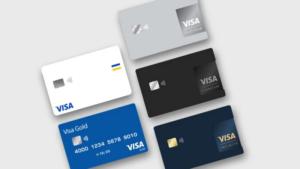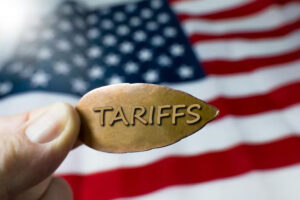
Visa’s $100M Apple Card Anticipation — What This Means For The Future Of Credit Cards
Visa Has Reportedly Offered Apple $100 million to Replace Mastercard as the Apple Card’s Credit Card Network Provider. The proposed switch arrives as Apple is seeking to revamp the Apple Card’s order structure given Goldman Sachs’ recent announcement of its departure from consumer banking. With both the issuer and the payment network in play, the table is set for one of the most competitive shakeups in co-branded credit card history.

The Apple Card: A Quick Recap
And that’s even before Apple introduced the Apple Card in August 2019, as part of its expanding effort to get into financial services. We designed this product to work right into the Apple ecosystem, with built-in support in Apple Wallet, no fees at all, and a real focus on privacy and simplicity.
The Apple Card took off, particularly with iPhone users who were either new to credit or desired a clean, intuitive user experience. But underneath, the partnership between Apple and Goldman Sachs was plagued by tensions over losses and conflicting priorities, according to reports.
By late 2023, it became apparent that Goldman Sachs was leaving the partnership — and that opened the door for Apple to reimagine the product from scratch.
A $100 Million Offer From Visa: A Strategic Move
Visa has reportedly offered Apple $100 million up front as it tries to become the new network provider for the Apple Card, according to reports from the Wall Street Journal. That is an audacious move, even by credit card industry standards. Visa’s bid features a hefty signing bonus — usually reserved for big retail or high-volume partnerships, like Costco, which famously dumped American Express in favor of Visa in 2016.
So what’s with this aggressive move by Visa
Customer Base: The Apple Card user base skews younger, wealthier and more tech-savvy than traditional credit customers — an ideal cohort for long-term credit usage.
Ecosystem Access: When integrated into Apple Pay, Apple Wallet, and perhaps Apple Savings, you’re exposed to a much broader array of services.
What Does This Mean for Mastercard?
Mastercard is the Apple Card’s network provider today, and it has every reason to battle for the relationship. The loss of Apple could represent a devastating blow to reputation and more, given how much more visibility does the Apple Card has within fintech (and the credit card community).
Mastercard is not talking much publicly, but insiders say the company is doing its pushes back to maintain its position, emphasizing the stability and experience the brand has carried — having supported the Apple Card from day one.
American Express Is in the Game, Too
To spice things up further, even American Express is giving this a shot—not only to be the network but possibly the issuer as well. That could provide Apple with a bundled solution and streamline operations relative to having one company issue the card and another run the network.
Amex brings the power of:
A premium brand image
See:Coronavirus fraud and online shopping scams: Everything you need to know
A large base of well-heeled cardholders
But one big hurdle is Apple’s hunger for ubiquity, and Amex has yet to rival Visa or Mastercard on a global scale with its network of merchants.
Key Strategic Decisions Facing Apple
Apple’s selection of partners will influence the arc of the Apple Card, and may set patterns for future tech-finance arrangements. Some important considerations are likely to be:
Financial Terms
Visa’s $100 million offer certainly helps, but Apple is also considering revenue sharing, transaction fees and long-term flexibility.
Worldwide Availability and Merchant Acceptance
Visa and Mastercard control the world’s networks, but if Apple has plans to take the Apple Card global, Visa’s bigger footprint could give it an edge.
Technological Compatibility
The selected partner must enable Apple’s advanced security, tokenization, and digital-first architecture. Visa has invested heavily in API integrations and mobile-first tech.
Brand and UX Alignment
Apple is fanatical about user experience. The new partner has to be able to offer a level of seamlessness, security, and innovation that lives up to the Apple experience.
What Is Next for the Apple Card?
Apple intends to wrap up new agreements by the end of 2025, with an overhaul of the Apple Card or a relaunch expected in 2026. That gives Apple time to negotiate offers, validate integrations, and, perhaps, do a full revamp of the rewards structure or add functionality such as buy-buy, pay-later (BNPL) or crypto integrations.
Consumers might get some of these benefits as well:
New welcome bonuses
Enhanced cash-back or points-earning rewards
Reduced APR or better interest rate plans
More robust fraud protection and dispute resolution tools
Industry Impact
This isn’t merely a branding swap — it’s a power move that could upend how tech companies interface with financial institutions.
For Visa, it’s an opportunity to establish its position in mobile-first ecosystems.
For Mastercard, it’s a loyalty and longevity test.
For Amex, it’s the chance to enter a different demographic segment and demonstrate its ability to grow.
For Apple, it’s all about control — of the product, the user experience and the future of digital payment.
Final Thoughts
Visa’s 100 million dollar bid to replace Mastercard on the Apple Card is not just another big business headline but a message that our credit future is digital, mobile and more dependent than ever on partnership between tech titans and financial companies.
But with competition boiling over, one thing is certain: the winner of the Apple Card business will earn more than a shiny new co-branded product; they’ll earn prime real estate in the future of payments.
Our Post


Beyond Budgeting: Master Your Money with the Power of Conscious Spending

